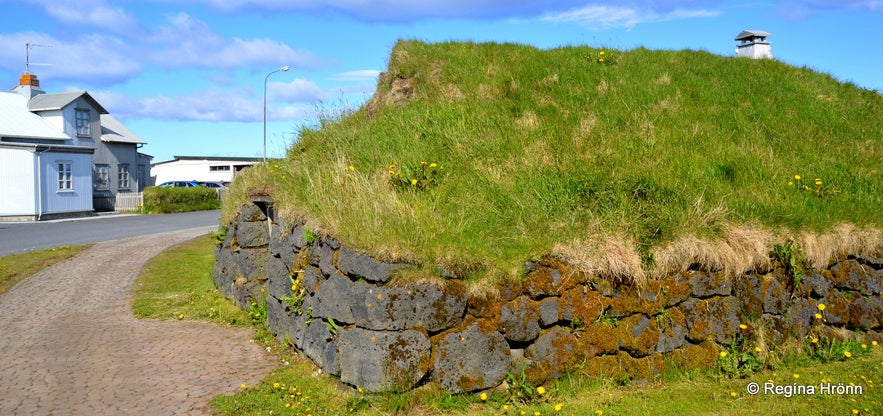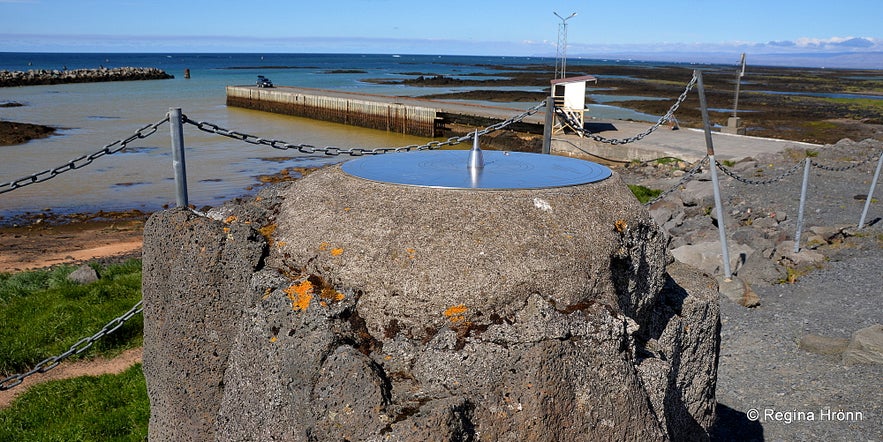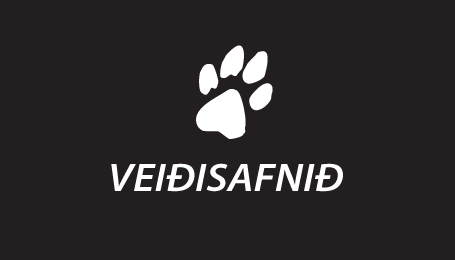
The lovely Stokkseyri Village in South Iceland - the Home of the Wildlife Museum, Turf Houses and Kayaking
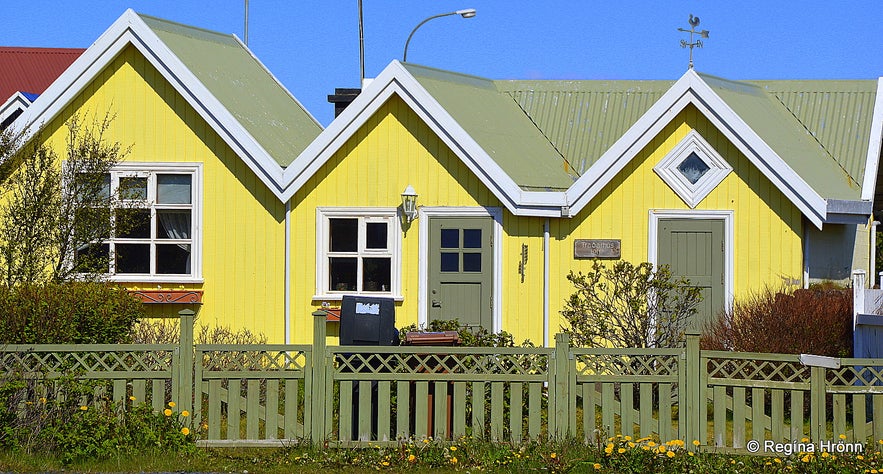
Stokkseyri village is a lovely little village in South Iceland close to Eyrarbakki village, which I have told you about in another travel-blog.
These 2 little villages are often overlooked by travellers, who don't know about their existence and stick to ring-road 1 on their travels in South Iceland.
But this detour from ring-road 1 is well worth it, as, in both these villages, which are right by the sea, you will see beautiful old houses and several museums.
Top photo: one of the colourful houses in Stokkseyri village
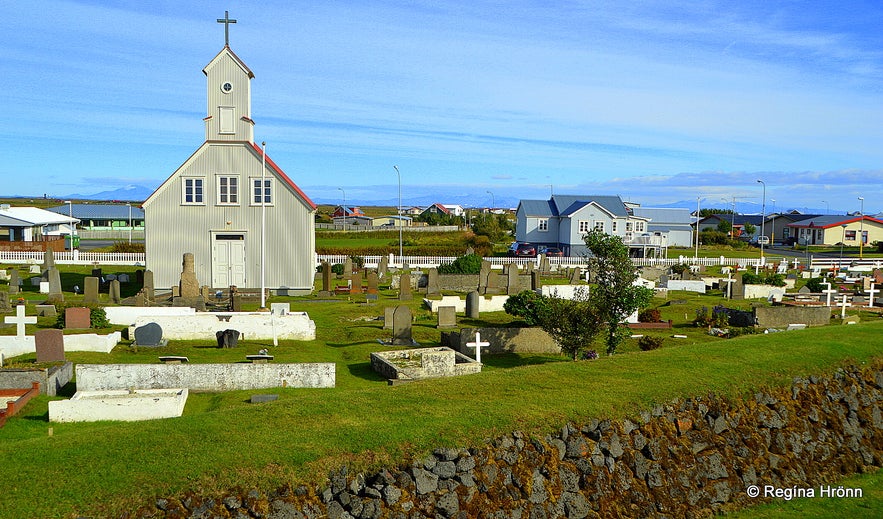
Stokkseyrarkirkja church
Stokkseyri is the village here in Iceland, which is often referred to as the museum village due to many of its interesting museums.
Stokkseyri and Eyrarbakki villages are only 7 km apart, and jokingly these towns are often referred to by Icelanders as "Stokkseyrarbakki" as we cannot be bothered to say that we are going to Stokkseyri and Eyrarbakki.
The settler Hásteinn (Hallsteinn) Atlason and his sons, Ölvir and Atli, first settled this area. They are mentioned in Landnámabók and in Flóamannasaga, which is a very interesting read.
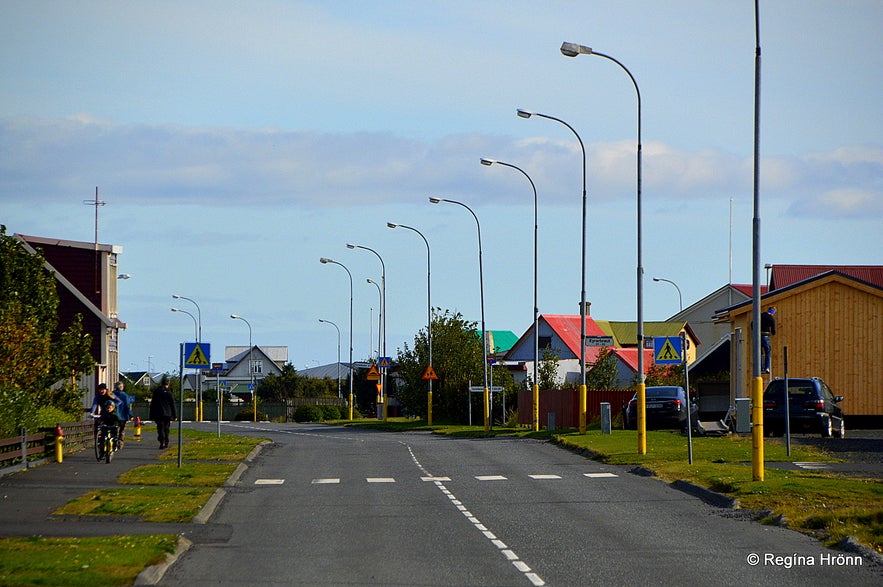 Stokkseyri
Stokkseyri
The population of Stokkseyri is only approx. 445, but here you will find a lot of activities, surprisingly so for such a small village.
There is a very good restaurant here, Fjöruborðið restaurant, and people come especially there from Reykjavík (65 km) to get lobster soup and visit the museums.

Vegamót house in Stokkseyri
In Stokkseyri you will find the Icelandic Wonders Museum, with its elves, trolls, and Northern lights.
There is also a Ghost Museum in the same building and art galleries and art studios, where one can buy handmade Icelandic crafts.
To me Veiðisafnið - the Wildlife Museum is the biggest attraction in Stokkseyri, and I will tell you all about it later in this travel-blog.
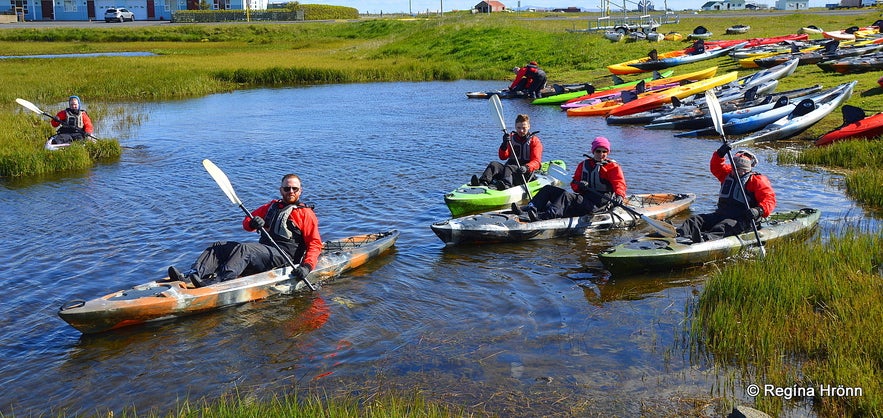
Kayaking in Stokkseyri is very popular
There are also popular organized Kayak tours, both in the canals and in the sea. I will tell you more about a kayak tour my friends joined a little further on in my travel-blog.
One of the museums in Stokkseyri is the replica of a fishermen's hut, Þuríðarbúð.
Þuríðarbúð fisherman's hut
Þuríðarbúð fisherman's hut
In Stokkseyri village you will find the hypothetical Þuríðarbúð. Þuríðarbúð is a tiny turf hut; a well-made replica of what the old seasonal fisherman's hut looked like.
Þuríðarbúð was erected back in 1949 in the memory of Þuríður Einarsdóttir (1777-1863) "formaður" - foreman, and the old ways of life of the seasonal fishermen in this part of Iceland.
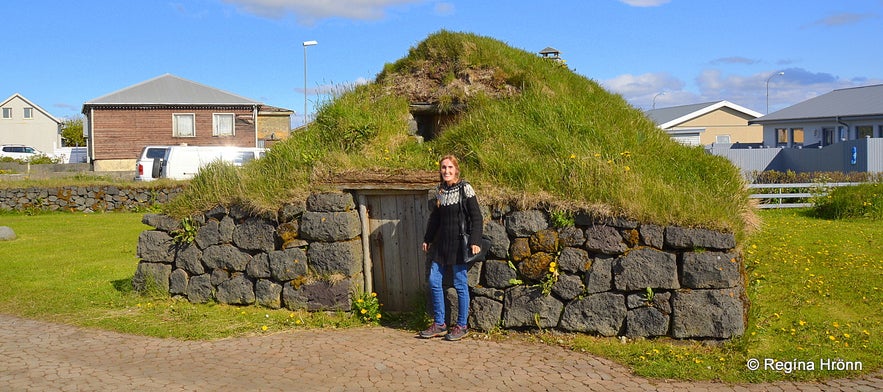
Þuríðarbúð fisherman's hut
In the 19th century, there were tens upon tens of fisherman's huts such as Þuríðarbúð in Stokkseyri.
These huts were made out of turf and stone and here the fishermen slept two and two together, dined, and entertained themselves while on land.
It must have been a bit strange being the only woman in the hut.
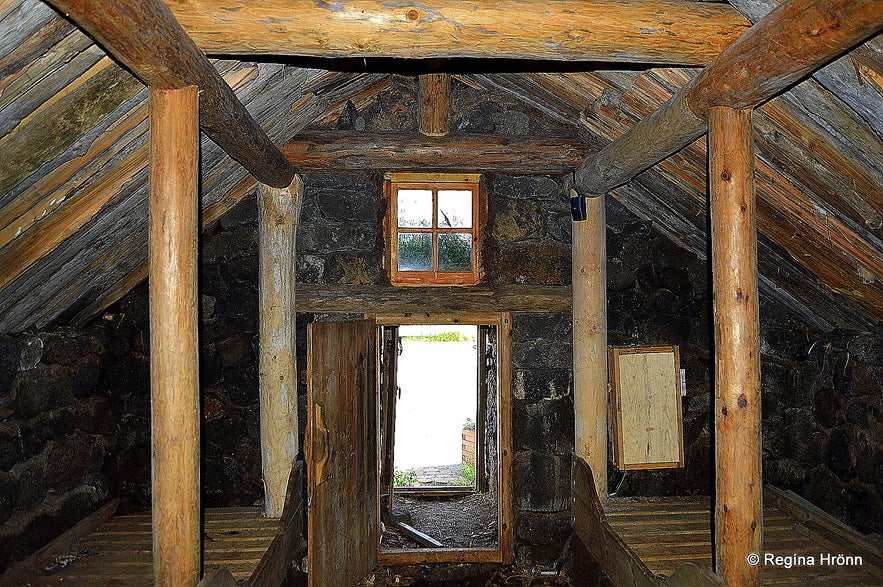
Inside Þuríðarbúð fisherman's hut
Þuríður was an extraordinary woman; at the age of only 11, she started fishing on rowing boats with her father, and at 17 she became an able-bodied seaman.
She was a fisherman for over 50 years, 34 of them from Stokkseyri, and a foreman on a boat for 25 years.

Þuríðarbúð fisherman's hut
Þuríður had to dress like the men working at sea and she got a special permit from the district sheriff to dress as a man.
She was called "formaður" for the major part of her years at sea, which lasted until 1843. 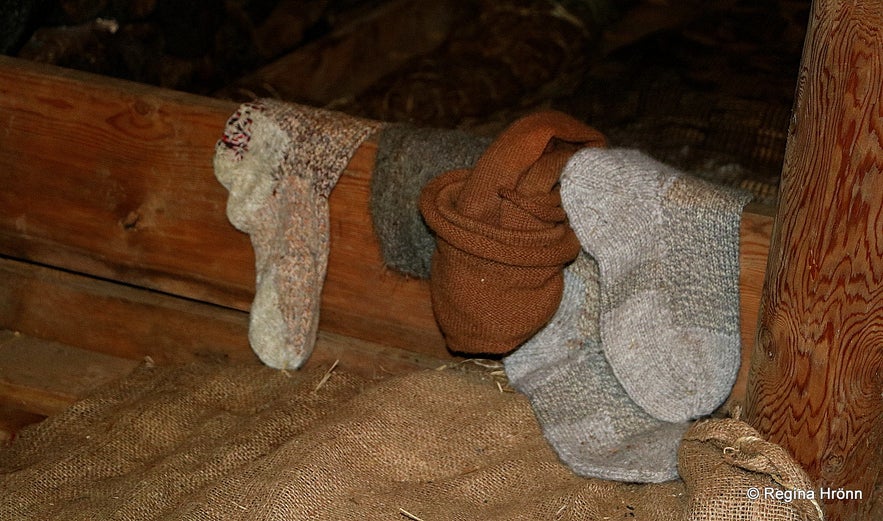
Inside Þuríðarbúð fisherman's hut
This was remarkable for a woman at that time, and there are no other examples known of a woman having such a career as Þuríður, that I know of.
Þuríðarbúð fisherman's hut was rebuilt in 2001. It is under the care of Byggðasafn Árnesinga - the Árnessýsla Heritage Museum and is open to visitors.
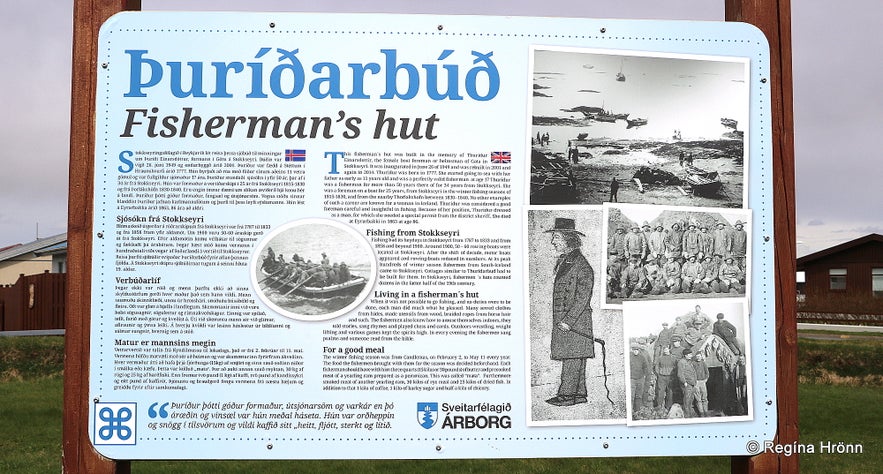
The information sign by Þuríðarbúð
The original Þuríðarbúð was located close to where the replica is now.
There is no admission fee. Please be respectful while visiting Þuríðarbúð.
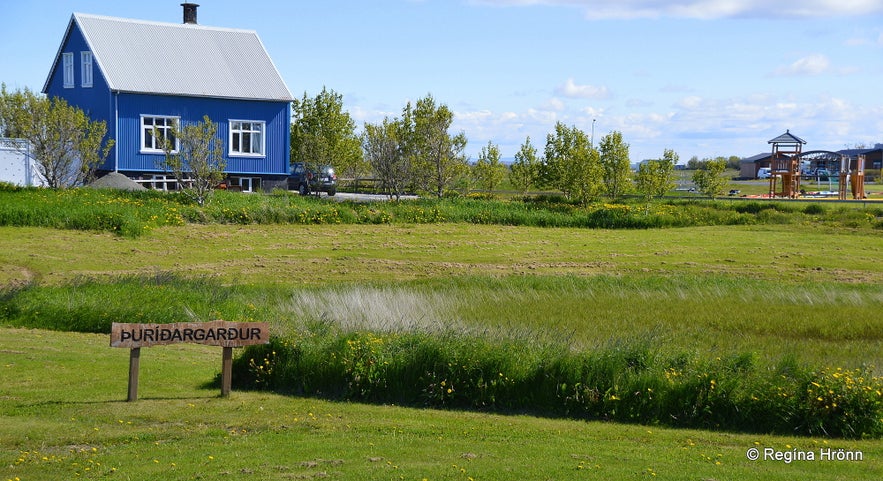 Þuríðargarður park
Þuríðargarður park
An ornamental park in Stokkseyri is also dedicated to the memory of Þuríður. It was opened in 2010.
Þuríðarbúð is not the only turf house in Stokkseyri...
Garðhús turf house

Garðhús turf house
There is another turf house by the main street in Stokkseyri village in South Iceland.
It is called Garðhús - the Garden house, and dates back to 1890, rebuilt in 1916 (Minjastofnun page 22-27).
It is a typical example of a workingman's cottage, the black house, and next to it are turf outhouses. From what I understand there is an open-hearth kitchen in the turf house. 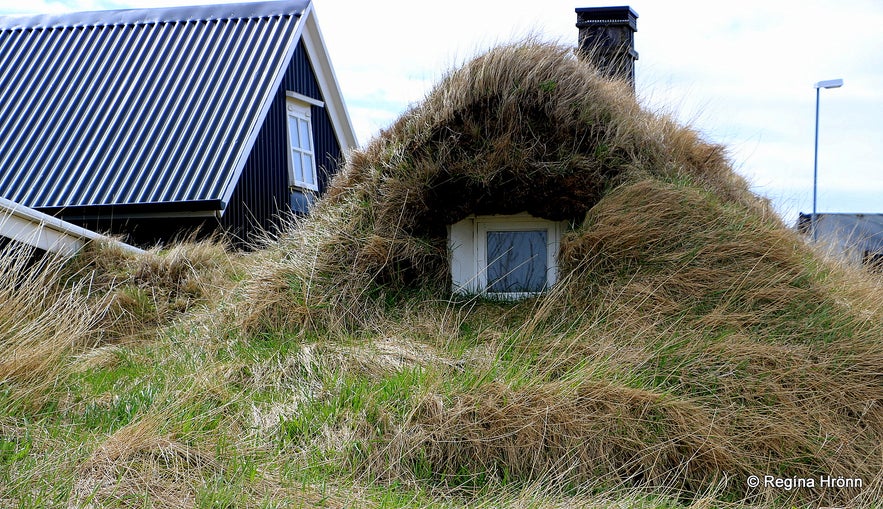
The turf house
Parts of the turf house look like cyclops from the street. The trees have grown so much though that it is difficult seeing the turf house from the main street.
The last time I was photographing the turf house, 2 German Shepherd dogs fiercely barked at me, thinking that I was an intruder and not a turf house fanatic.
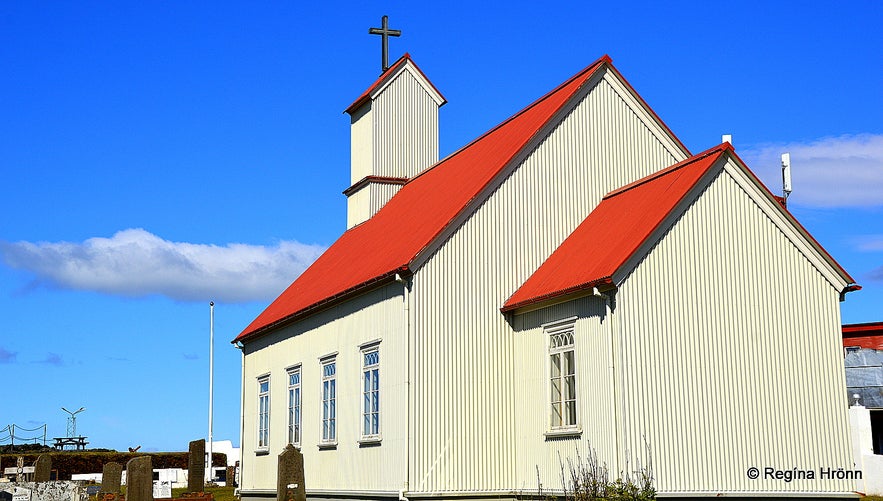
Stokkseyrarkirkja church
As in all the towns and villages in Iceland, there is a village church. Stokkseyrarkirkja church dates back to 1886. It was preserved in 1990.
I visit churches all over Iceland on my travels and also Minnismerki drukknaðra sjómanna - the Memorials for drowned fishermen.
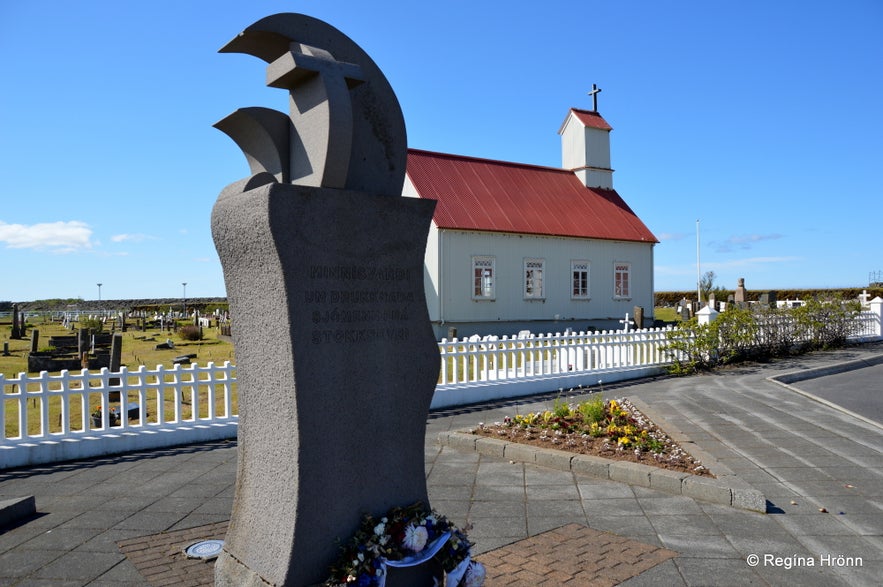
Minnismerki drukknaðra sjómanna - the Memorial for drowned fishermen in Stokkseyri
You will find these memorials in all the villages and towns by the sea in Iceland, and I consider them to be the heart of the villages.
The memorial in Stokkseyri was made by Elvar Þórðarson.
Fishing is what kept the Icelandic nation alive and the unforgiven sea has claimed many lives. These monuments are a reminder of how harsh life was in Iceland.
Minnismerki drukknaðra sjómanna - the Memorial for drowned fishermen in Stokkseyri
Many fishermen drowned in the former vibrant fishing village. The skerries in the fairway by Stokkseyri are dangerous and the port facilities were difficult in this location.
I always visit these memorials on my travels in Iceland and pay my homage.
The view-dial in Stokkseyri
The view-dial in Stokkseyri
I not only search for churches and memorials on my travels in Iceland but also seek out the view-dials in Iceland, which are now 90+.
There is one such view-dial in Stokkseyri by the sea behind the Stokkseyrarkirkja church. You will find it on top of the sea wall.
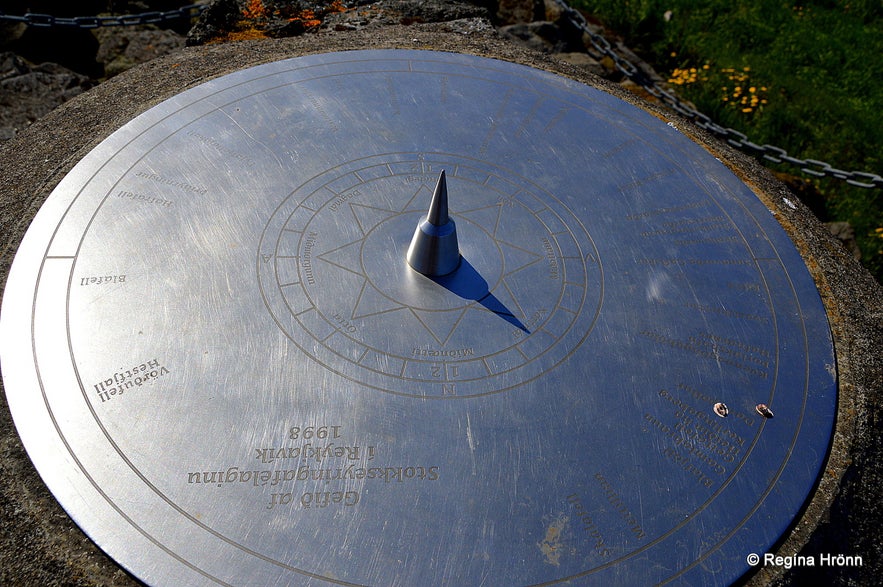
The view-dial in Stokkseyri
The view-dial in Stokkseyri, which was a present from the Stokkseyringafélag club in Reykjavík, was erected in 1998.
The view-dials usually show the name and height of the surrounding mountains.
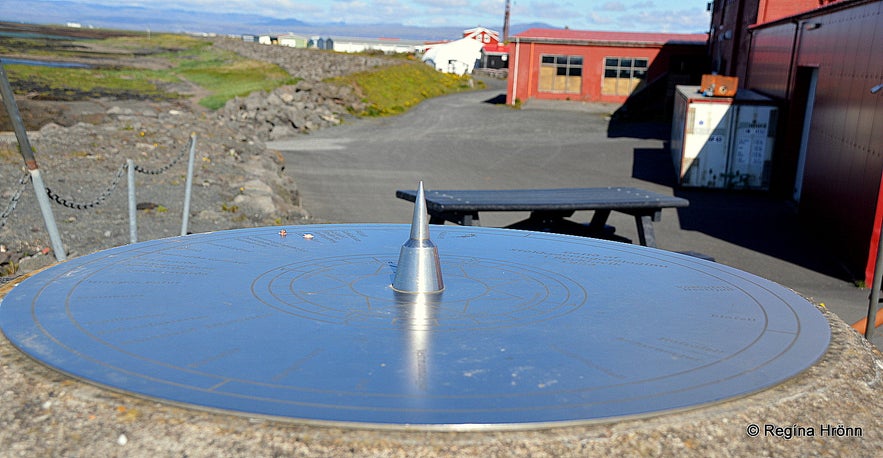
The view-dial is next to the the Ghost museum
My father-in-law, Jakob Hálfdanarson has designed many of the view-dials in Iceland and his uncle, Jón J. Víðis was the instigator for view-dials in Iceland.
He designed 23 view-dials from 1935 to 1974. When he died my father-in-law continued the work of his uncle.
Stokkseyrarfjara - the seashore at Stokkseyri
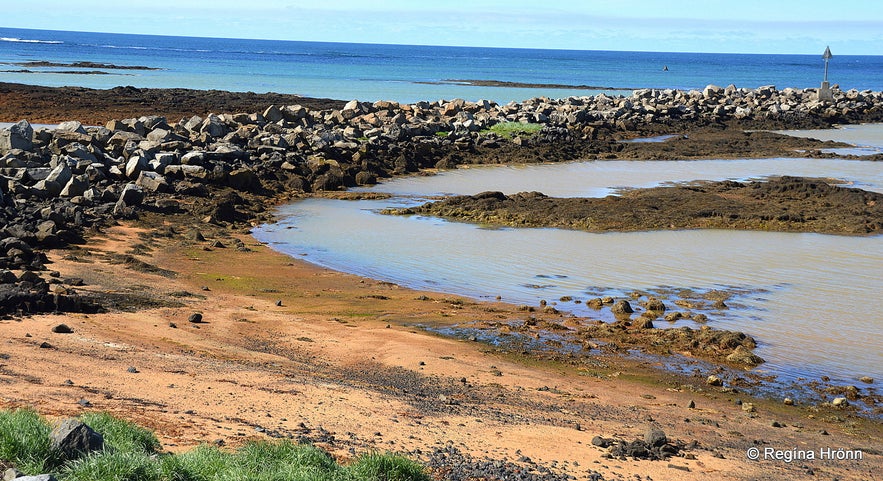
The pink beach at Stokkseyri
The seashore at Stokkseyri is very popular as well with lovely little conches and brick-read sands.
The shore is popular both amongst locals and tourists and I have seen tourists camp in the ait there, wouldn't recommend putting up a tent so close to the N-Atlantic ocean though.
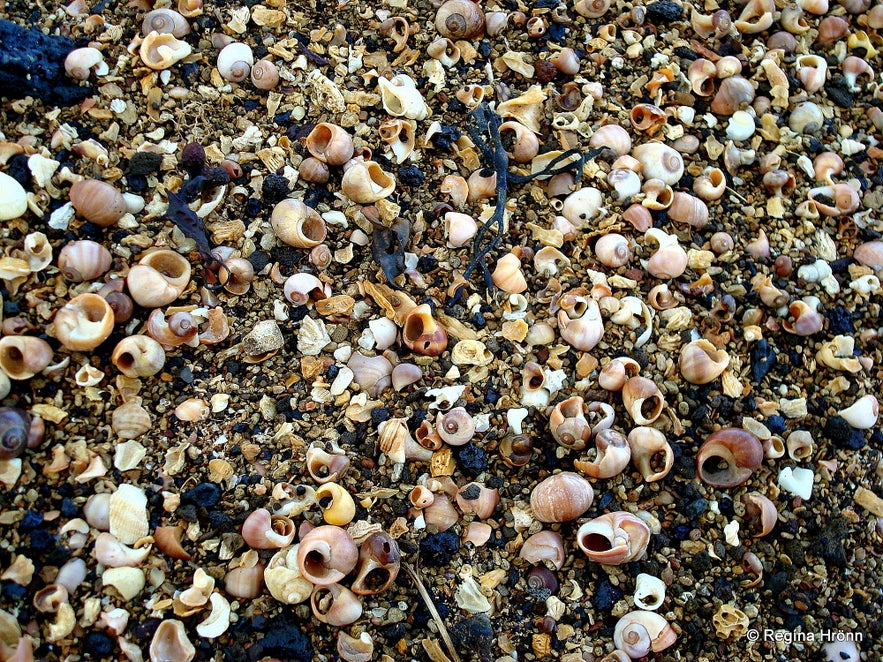
The beach is covered with conches
There is an information sign by the seashore with information about the vegetation and birdlife as well as information about the lava by the shore, which stems from the largest known Holocene lava flow on earth some 8,700 years ago!
It was huge as it covers most of the lowlands for 140 kilometers i.e. between the Ölfusá and Þjórsá glacial rivers, which are our most voluminous and longest rivers.

Road directions and the biggest attractions in Stokkseyri
One of the museums in Stokkseyri village is the unique museum called Veiðisafnið - Wildlife Museum (Hunting Museum) - the biggest museum of its kind in the Nordic countries.
Veiðisafnið - the Wildlife Museum
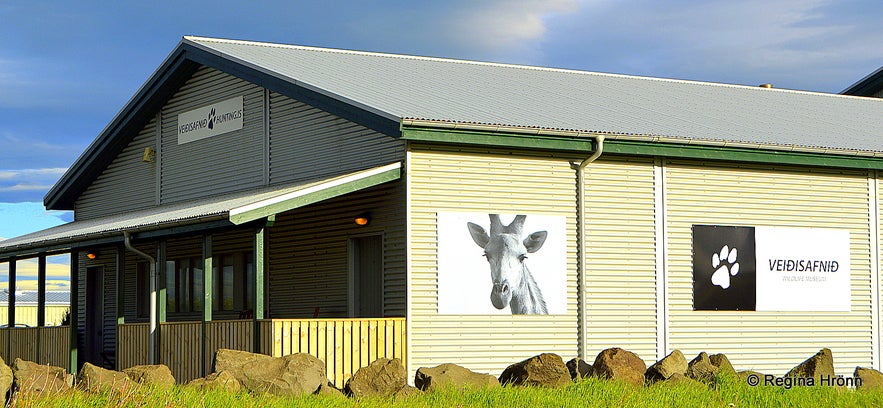
Veiðisafnið - the Wildlife Museum
The Wildlife Museum in Stokkseyri is a non-profit organization and the only museum in my country dedicated to wildlife and ethical hunting.
At the Wildlife Museum, you can see the animals, the guns with which they were hunted, and get a guided tour by the hunter himself!
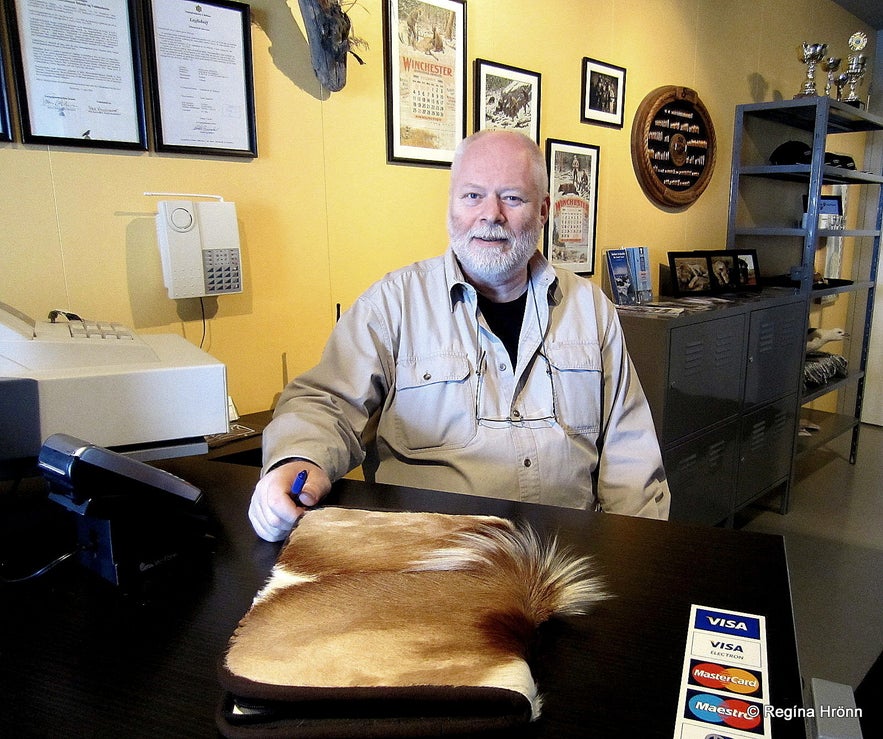
Páll Reynisson
At the museum, you will see all kinds of animals, f.ex. a giraffe, ostrich, full mount lions and a full mount polar bear, buffaloes, a zebra, a musk ox, a crocodile, seals, and all kinds of mammals and birds from 3 continents.
The visitors at this museum are mainly Icelanders, but I want to introduce this unique museum to our foreign visitors as well. Driving down to the sea to visit the villages of Stokkseyri and Eyrarbakki is a lovely detour from ring road 1.

The entrance to the Wildlife Museum
Páll Reynisson, the founder of the Wildlife Museum, is the only Icelander who is well known for hunting with a handgun abroad. He hunts almost every type of animal with a handgun: lions, giraffes, antelopes, and even crocodiles!
Páll is a perfectionist and his collection is beautifully mounted on the walls and on the floor - with birds flying above one's head. The Wildlife Museum is the largest museum in Iceland with birds in their flying position.
This museum is extraordinary and much more than one expects. It is amazing really that in the small village of Stokkseyri such a museum can be found. The museum is also the home of the hunter Páll, who opened his museum to the public in 2004.

Páll and I at the Wildlife Museum
Páll started hunting when he was a teenager and started out with 2 stuffed birds. His collection eventually grew so much that he had filled 3 houses in Reykjavík. He then moved with his collection in 1999 to Stokkseyri village right by the sea in South Iceland.
More and more people were knocking on his door to have a peek at his animals and when 1,000 people had visited him for that purpose over a period of 6 months - entering through his kitchen and saying that it was selfish of him not to open up a museum to show the animals, he decided on opening up a museum to show people his huge collection.
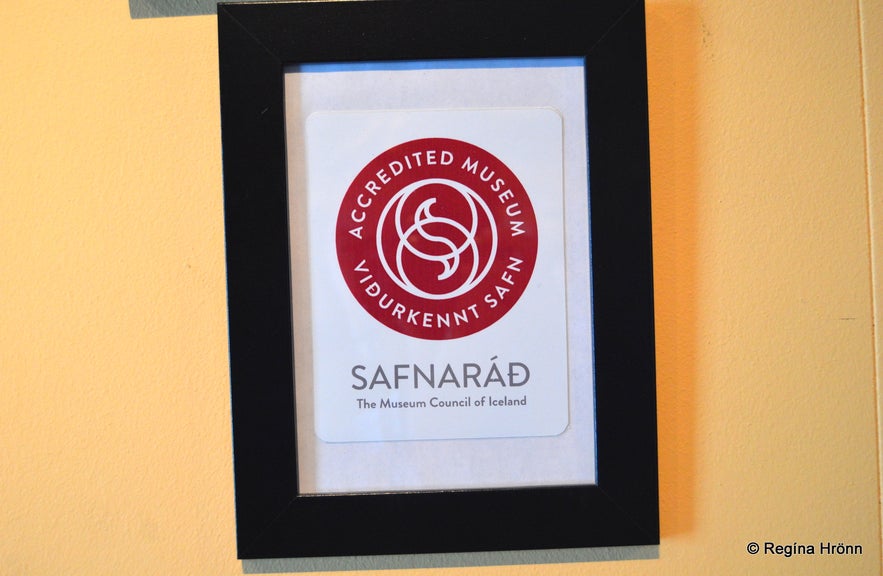
The Wildlife Museum is accredited by the Museum council of Iceland
Páll told me that one night a bus with 42 people had arrived at 11 pm at the museum. This group had been having dinner at Fjöruborðið restaurant in the vicinity.
Páll opened the door in his pajamas and showed them his museum, proving that this unique museum has got a personal touch :)
For the next 2 years, there was an explosion in the number of visitors to the museum and Páll expanded the museum in 2005 and 2006, adding a second showroom on the 9th of June 2007 - so now 2 groups can be welcomed at the same time.
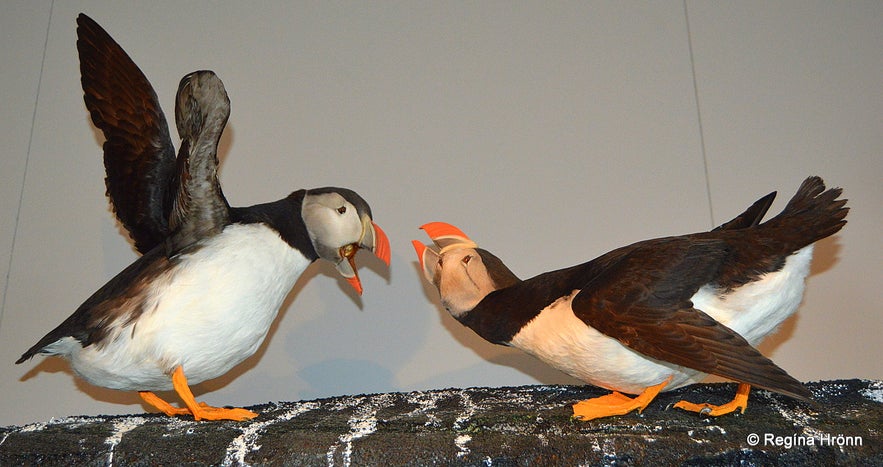
Puffins at the museum
Daily visitors vary from 2 to 424, but on average approx. 7,000 guests visit the Wildlife Museum annually. In 2009, in the first year after the financial collapse in Iceland, a whopping 9,000 guests paid the Wildlife Museum a visit
Icelanders were not travelling abroad in that year as our króna collapsed in the financial crisis.
There are 2 big showrooms - one with a big giraffe in one part of the room plus numerous other animals, which Páll has hunted in 3 continents - Europe (Iceland and Sweden) Greenland, North America, and South Africa.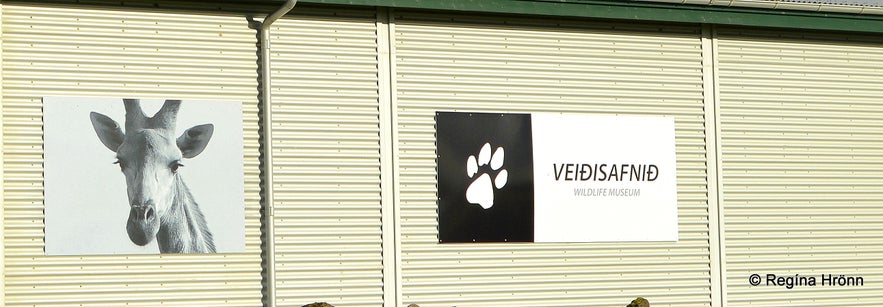
Veiðisafnið museum
Unfortunately, as Páll doesn't allow me to post photos of the animals, I don't have a photo of the giraffe, but it is huge!
Páll shot the giraffe in 2000 in South Africa with a cal. 44 Magnum, single shot with Ruger Super Redhawk. The giraffe was 35 years old, 5.03 meters high, and 1,250 kilos.
In the newer showroom, there is a lion and a lioness, a polar bear, a crocodile, and numerous birds and other animals. On display is also various hunting gear, like rifles, hunting knives, etc. It is quite amazing and so worth a visit.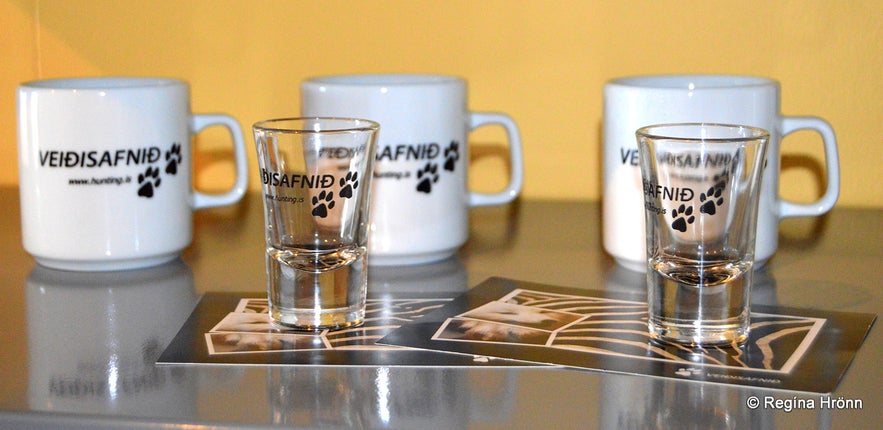
At the Wildlife Museum
The polar bear was shot in Greenland, not by Páll himself though. The museum bought the polar bear from a taxidermist in Akureyri in North Iceland.
It has been jokingly said that this polar bear is the only polar bear, which has travelled under the ocean through the Hvalfjarðargöng tunnel.
Next to the polar bear, there are 2 white Arctic foxes, but Arctic foxes are among the few wild mammals in Iceland.
They stay away from humans and I have only on 3 occasions seen foxes in the wilderness of Iceland on my travels.

The polar bear, photo taken by Páll
The biggest prey in Iceland is the reindeer bull. The reindeer were imported in the year 1771 from Norway and run wild in East Iceland only. At the museum, you will find 2 life-size reindeer.
Páll says that the main attractions at the museum are the lions and the giraffe. Páll shot the lions on his 50th birthday (19th of May) in South Africa. He swore on his 25th birthday that he would shoot a lion on his 50th birthday - and he kept his promise.
Páll and his friend, Jónas Geir Sigurðsson, shot two American Buffaloes (Bos Bison) with a handgun in Minnesota USA. Their shoulder mounts have been mounted on the wall in the first showroom.
The Buffaloes were fully grown males - one weighing 950 kilos and the other one 1,100 kilos - they are massive!
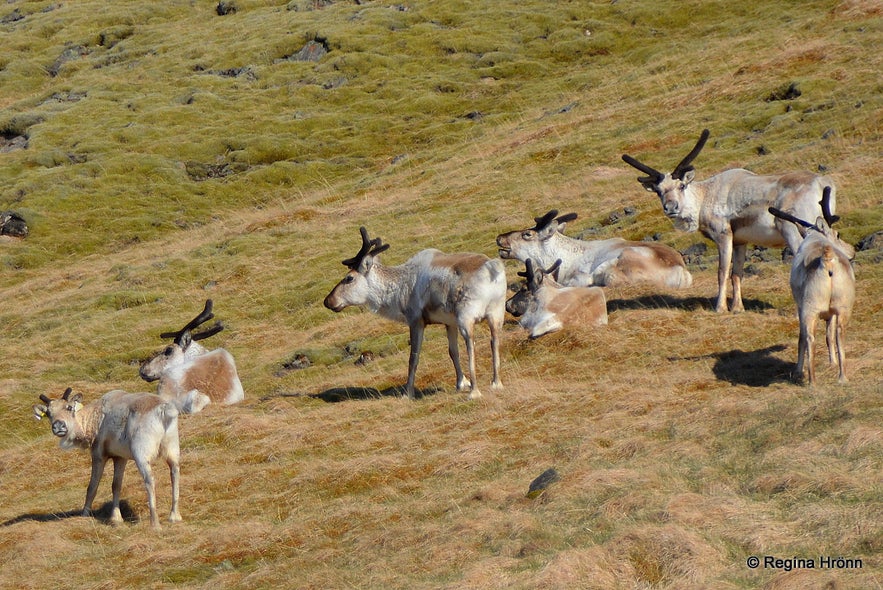
I spotted these reindeer by the road in SE-Iceland
Standing in front of them and looking into their glass eyes is surreal, I never realized how big this animal is until I saw it at the Wildlife Museum! The gun they used was a T/C Contender cal. 45-70 and the weight of the bullet was 400 grain.
Taxidermist Ted Pilgrim in the USA mounted the buffaloes. I wish I had a photo of the buffaloes to show you how big they really are.
Often school groups visit the museum - from Iceland, the Faroe Islands and students studying natural history have visited from Copenhagen. The museum also has lectures for kids as they are especially enthusiastic about seeing all these animals and hearing stories about hunting.
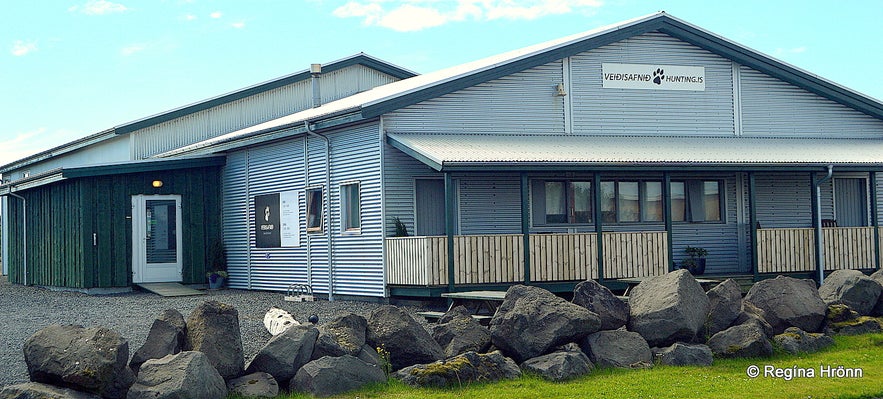
Veiðisafnið - the Wildlife Museum
There isn't another museum of this nature in Iceland and the Wildlife Museum is one of its kind in the Northern countries. Just imagine, this large museum - established and run by Páll - is one of its kind in the Northern countries!
Páll has done everything at the museum himself from A-Z - apart from the taxidermy. 95% of the animals at the museum have been haunted by Páll. Most of the animals are the work of taxidermists in South Africa and are shipped to Iceland.
According to Páll, the best taxidermists are in South Africa. The quality of the taxidermy is the central issue to the perfectionist Páll and is, of course, first-class.
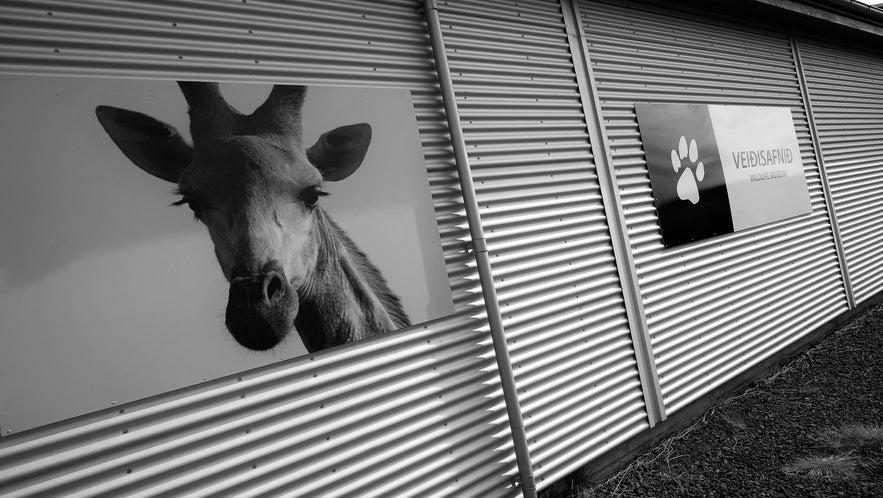
Photo by Páll, he is a professional photographer, I am just an amateur photographer ;)
All the ammunition for the guns is custom-made by Páll himself, he hunts the animals, he created the lighting and design of the museum, he is a photographer and he mops the floors. He imports the goods directly and organizes the hunting tours himself without a middleman, which keeps the prices low.
In 2009 Páll went on a hunting safari to South Africa and on that trip, he acquired an ostrich and a crocodile. The life-size ostrich is on display, it is a 2-meters-high male ostrich. It is huge, much bigger than I am, and almost scary looking, I would not want that animal running after me, nor any other animal for that matter!
The crocodile, a Nile crocodile, is mounted whole on one of the walls of the museum. I have noticed that some people think that the whole animal is mounted on the wall, meat, and everything! Of course, that is not the case, but a cast is made and the hide is put on the cast.
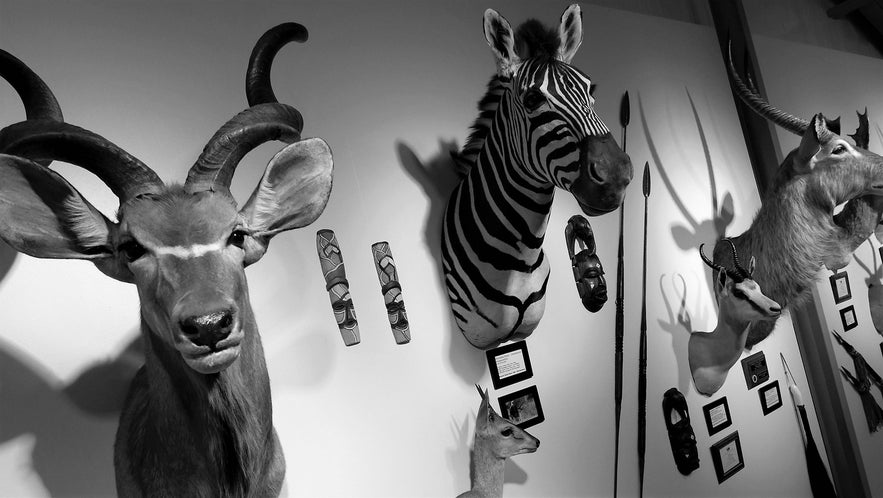
A photo by Páll
Páll also hunted 4 different types of antelopes and you can see their shoulder mount on one of the museum's walls.
On the same trip in 2009, Páll took part in a rescue hunt where he shot a rhino with a dart from a specially made rifle. The rhino was darted and its horns removed - then the rhino was released.
Not having any horns the rhino is of no value to poachers - and thus its life was saved. Poachers kill the rhinos for their horns, which they can get a good price for in Asia, as there the powdered horns of a rhino are believed to be medicinal.
Mounted on the wall in one of the showrooms at the Wildlife Museum is a cast of the shoulder mount of that huge rhino. It is the only replica at the museum.
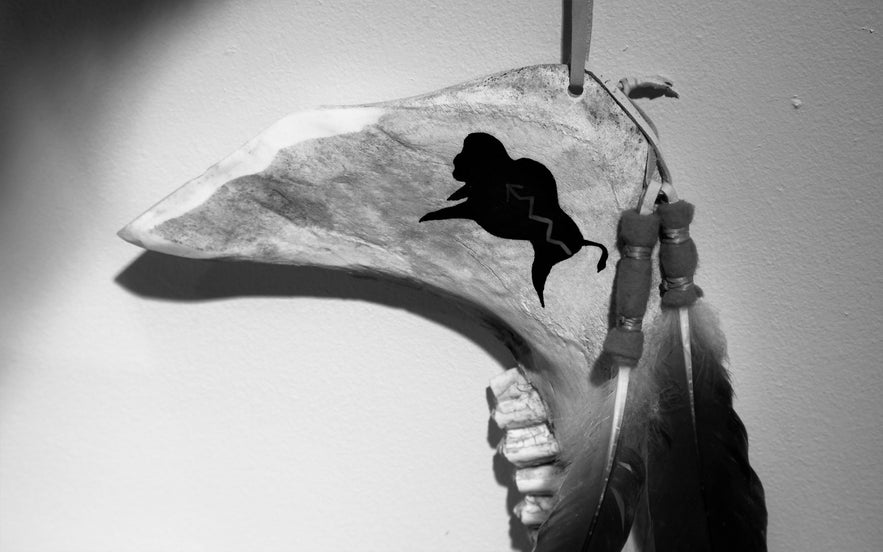
Photo by Páll
No photos are allowed inside the museum for security reasons, so I had to borrow some from the photographer and former TV cameraman - the hunter Páll. They are in black and white, as the Wildlife Museum uses black and white photos on its website.
Páll allowed me to take a couple of photos in the museum reception, f.ex. of the puffins, which in my opinion have to be shown in colour as they have such colourful beaks. So the colour photos are mine. I stalked Páll for a couple of years - begging him for permission to take some photos as I wanted to write about his museum.
Even though he is my brother-in-law I never got his permission. He eventually caved in though and allowed me to use some of the photos belonging to the museum. Thank you, Páll ;)
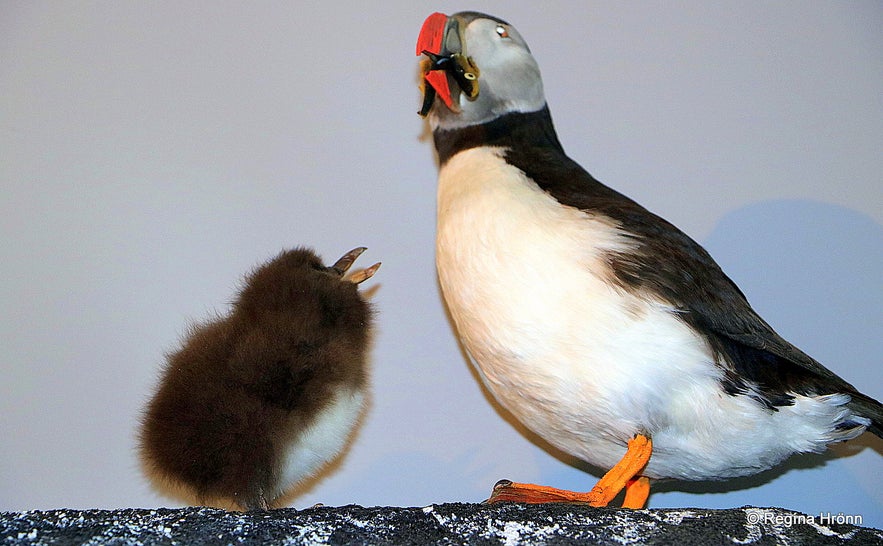
I am only allowed to take photos of the animals at the museum entrance where one can see cute puffins
250 animals (birds and mammals) are on display at the Wildlife Museum and 55 guns! Páll regularly moves things around and changes the display and improves - being the perfectionist he is.
A grey wolf hunted in December 2012 in Estonia was added to the museum in 2016. The grey wolf, the polar bear, and the moose are animals that have been bought for the museum.
The latest additions to the Wildlife Museum are 8 animals from South Africa, which were hunted in 2016 and put on display in the summer of 2017.
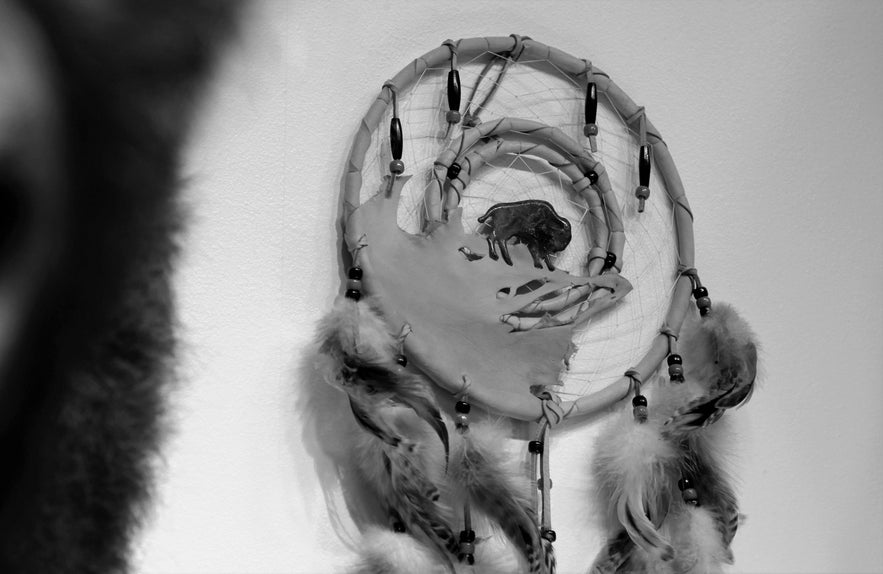
Photo by Páll
Some of the animals are on loan from the Icelandic Institute of Natural History, like the dusky leaf monkey, the beautiful big owl, and the lion's head. These items are old and were a donation to the Icelandic Institute of Natural History in Iceland.
Páll runs the Wildlife Museum and lives at the museum with my sister. They have a breathtaking ocean view from their apartment - and they often see whales swimming by! Fancy that! Once a year they invite my whole family for a barbecue and a sleep-over at the museum. Which stopped during Covid, of course.
Then my husband and I slept on mattresses in the showroom with the polar bear and the lions, and when I opened my eyes in the morning I have 2 reindeer staring at me - plus a couple of swans flying over my head. It is quite a unique experience!
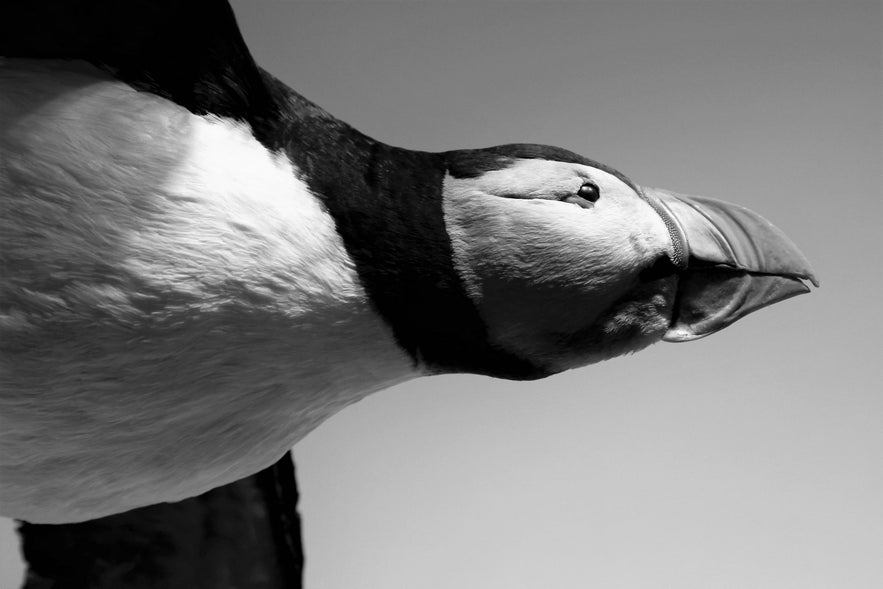
The puffin - photo by Páll
Páll is a trophy hunter with a good heart - the Indian in him tells him to follow the animals to the end and he is sure that he will meet their souls again. Until then the animals get eternal life at the museum.
In Africa, they make use of the whole animal and eat the offals. Páll eats the meat of the animals he hunts and it is sold, so nothing goes to waste. Only the pelt of the animal is used for taxidermy. I cannot see that this is anything different than slaughtering sheep, pigs, horses, and cattle on a large scale for their meat as some people would like to argue.
The stock needs combing out and often the older animals get haunted.
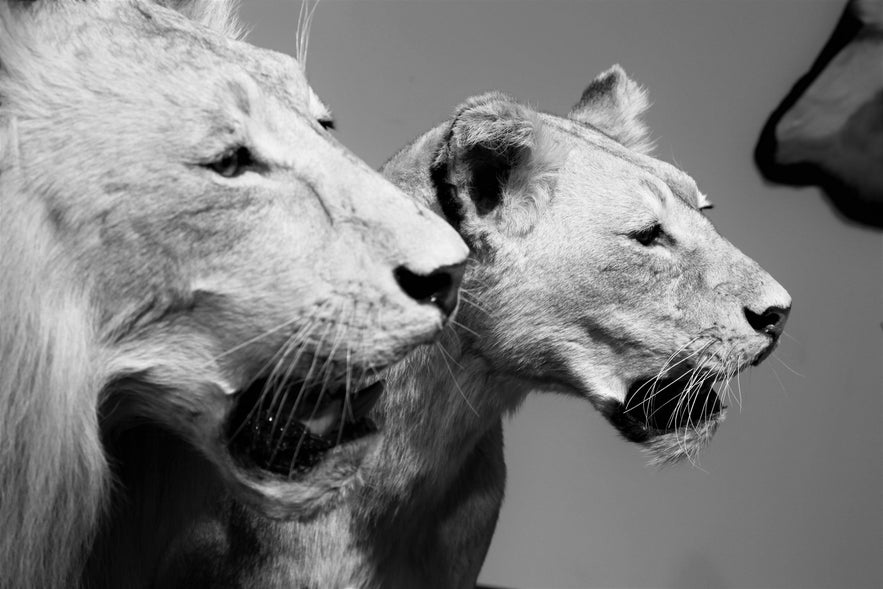
Photo by Páll
Páll tries the meat of all the animals he hunts and has tasted the polar bear meat, the meat of lions, giraffes, antelopes, etc.
Páll claims that hunting animals is intrinsic and I must agree with him, even though I chose to be vegan for 26 years. Páll is a preservationist and says that most hunters are preservationists. The hunters pay a towering fee for hunting the animals in Africa and this fee goes to the preservation of the stock.
In Iceland, the hunters also pay for the research on wild animals with the fee they pay for the annual hunting license.
Páll has got several acknowledgments from the Safari Club International – SCI hanging on the walls of the museum.

Photo by Páll
The Wildlife Museum invites blind and visually impaired people for one weekend of a free touch safari at the museum, in collaboration with the Icelandic organization of the visually impaired.
The animals are then dismounted and the blind visitors are given gloves so they can touch the animals.
Up to 50 blind or visually impaired people can visit the museum at the same time. Several blind people have travelled from England to visit the museum this weekend.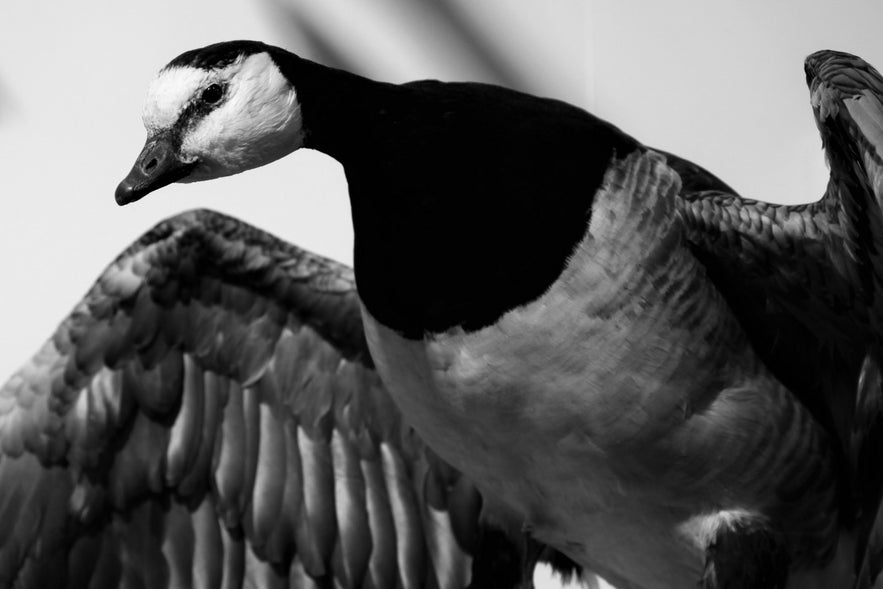
Photo by Páll
There is an annual gun exhibition for one weekend at the Wildlife Museum. It is the 17th time (2022) this exhibition has been held and several hundred people visit the exhibition during those 2 days - it is very popular.
On display is a varied selection of all kinds of firearms; shotguns, machine guns, army rifles, handguns, etc. Firearms from privately owned collections are on exhibition at the museum for the duration of this weekend only.
Watch an interview that the TV station Stöð 2 made with Páll at the gun exhibition. It is in Icelandic only as it was on our news, but it will give you a rare glimpse into the museum and the guns.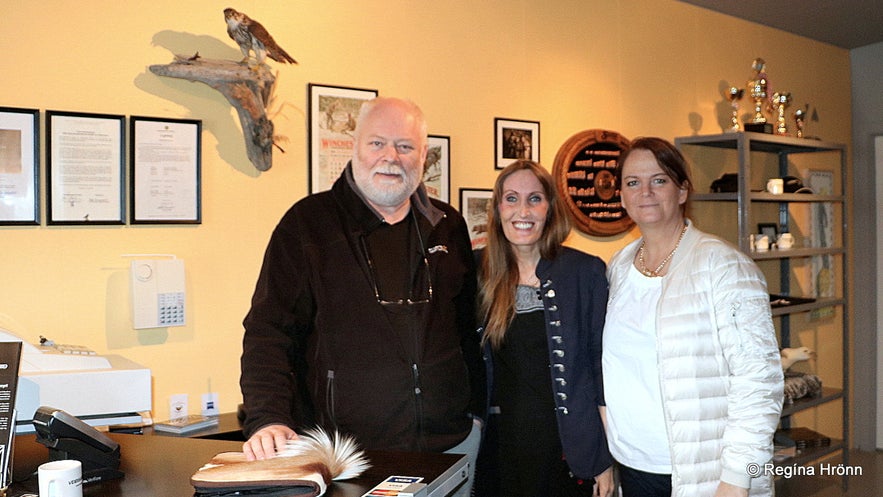
I often take my friends to the museum - Hildigunnur owns the travel company Rjúpa travel
At the museum, you will see two handmade shotguns made by the late Jón Björnsson from Dalvík, who was around 70 years old when he started making guns.
All in all, he made 120 handmade shotguns, which he called Drífa. They became very popular as Jón Björnsson was extremely skilled in this art and his guns are masterpieces and collector's items.
Páll and the descendants of Jón Björnsson managed to trace all 120 Drífa guns, which was a huge task. The location of these guns was a research project of the Wildlife Museum.
The Wildlife Museum logo
Páll has paid homage to some of the great hunters of Iceland, f.ex. to two well-known fox hunters with an exhibition on their life and weapons. They are Sigurður Ásgeirsson (Siggi tófa) from Gunnarsholt and Einar Guðlaugsson from Þverá.
Páll has held a seminar for new gun owners at the local gun club SFS for the Icelandic police, teaching them how to use firearms.
A guided tour is available by appointment, make use of that as Páll is very knowledgeable.
The museum is open: April-September: daily from 11:00-18:00. October-March: weekends only. December and January: closed.

The Wildlife Museum
The Wildlife Museum is the second building to the right as you enter the lovely village of Stokkseyri, so this is where you can start, by visiting the Wildlife Museum before you visit the village itself.
If you are interested in hunting and wildlife, or just wildlife and to have a look at the animals, then visiting this unique museum should not be missed.
Kayaking in Stokkseyri
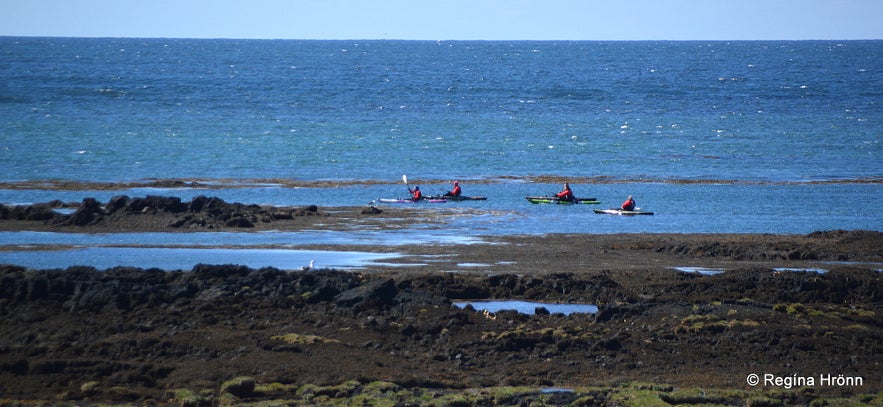
My friends kayaking in the sea in front of the museum
When my friends went kayaking for 2 hours in the canals and on the sea by Stokkseyri, I visited my sister and sat on her balcony and zoomed in on them kayaking in the sea in front of the museum.
I joined them for the first part of the tour so that I could take their photos. They were suited up in overalls and a life vest and got warm gloves as it can get pretty cold in Iceland.
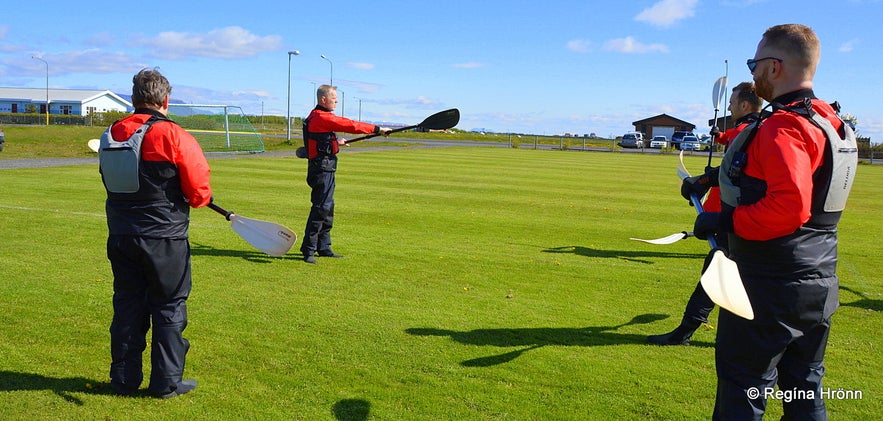
First, they got a lesson in kayaking
They first got a lesson in kayaking and paddling techniques from the instructor and off they went into the canals of Stokkseyri.
At the beginning of the tour, one of our friends was taking photos of my husband and the kayak capsized and he landed in the water. So be careful when taking photos.
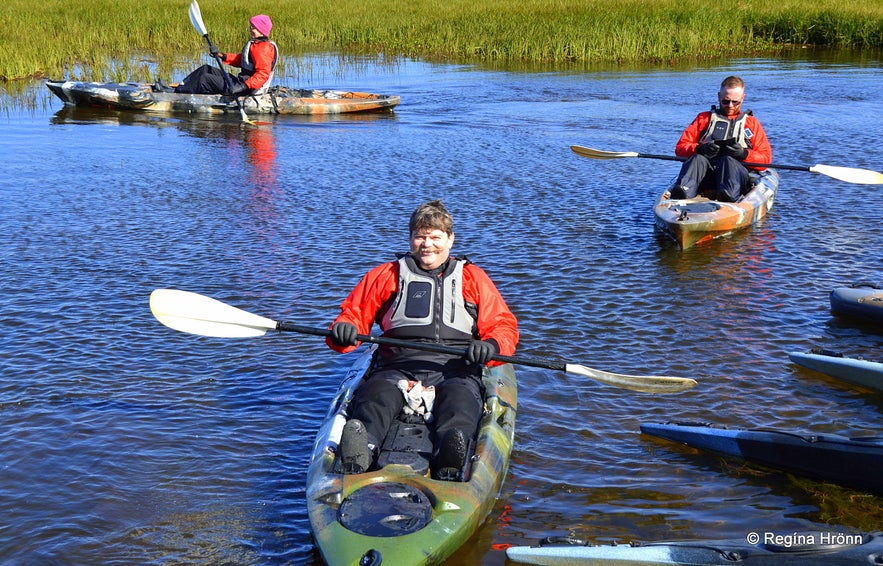
My friends kayaking in the canals at the beginning of the tour
This kayak tour is called the Power challenge circle tour - I do not do power challenges ;)
There is another tour Family-Friendly 3-Hour Guideless Robinson Crusoe Kayaking Tour which was more up my alley, but they wanted to include kayaking in the sea.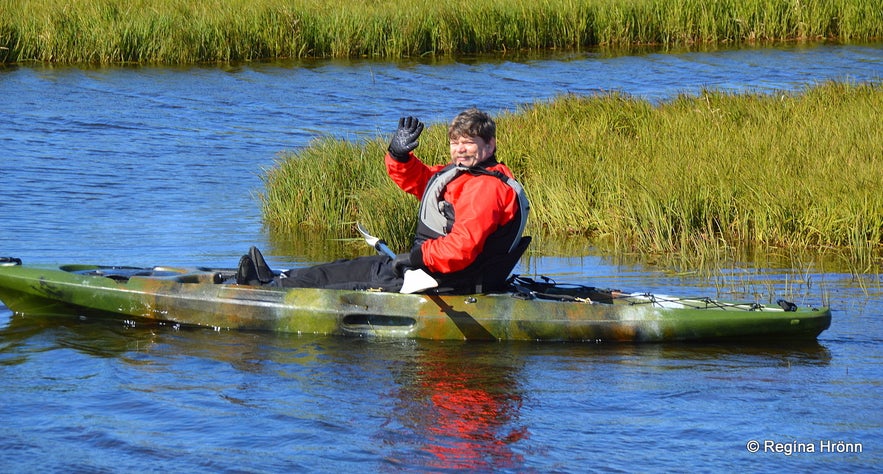
My husband kayaking in the calm canals
I have tried kayaking in a calm sea in Ísafjörður in the Westfjords, but as they wanted to do the more challenging tour I went for a visit to my sister as we don't see each other often as we live in different towns in Iceland.
She used to live in Reykjavík but when her husband died she met Páll and moved in with him at the Wildlife Museum.
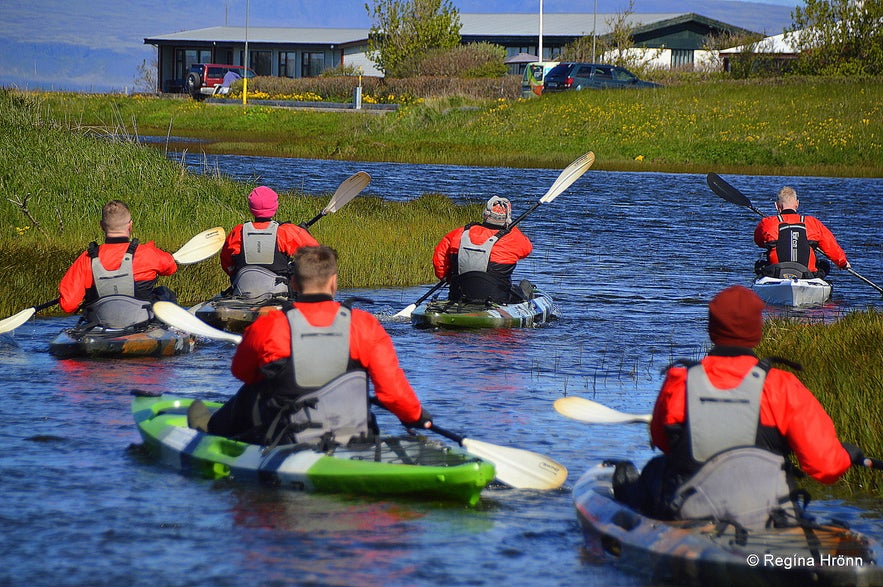
Here I left my friends when I saw them disappear into the canals on their way to the sea
To visit the south coast of Iceland you can rent a car in Reykjavík, and drive to Stokkseyri and Eyrarbakki in less than an hour via Route 1 South and Route 39, which we call Þrengslin.
Or you can follow route 1 and drive down to Stokkseyri from Selfoss town.
Here is the location of Stokkseyri on Google maps.

I will show you the Vitaleiðin - the Lighthouse trail of South Iceland in another travel-blog.
他おすすめのブログ
ブルーラグーン - Blue Lagoon
まずブルーラグーンという世界的に有名なスパについて紹介したいと思います。アイスランドの首都から車で30分のところにあるとても綺麗な温泉施設です。わき水のほかにアイスランドには地熱発電施設がたくさんあり、そこからの温水を利用しています。 でも、Blue Lagoonの魅力はそれだけではありません。ラグーンのミネラルの多くは、あなたの肌のに非常に良いです。例えば、シリカを顔に付けたら、肌がとてもっと読むIcelandic Nature - アイスランドの自然
アイスランドの自然 多くの観光客が自然を見るためにアイスランドに来ると思います。自然は汚くなくて、とても綺麗です。アイスランドの自然はほとんど、昔のままであると思います。 アイスランドの自然でいろいろなアクティビティができます。自分が一番好きなアクティビティは山のハイキングです。夏によく家族とハイキングトリップに行きます。普通に15-20人のグループと行って、みんなとキャビンで泊まります。もっと読むアイスランドの魚料理
アイスランドの魚料理。 アイスランドの経済の最も重要な業種は観光と漁業です。従ってアイスランド人は魚料理がとても好きです。それは魚が新鮮だからだと思います。日本の魚料理と違うのは作り方だと思う、生で食べるよりアイスランド人が普通に魚を焼く。でも日本みたいに全体調理しなくて、アイスランド人が魚を一人分のサイズに切って調理するんです。 魚料理と釣りが好きなら、アイスランドに来たらとてもいもっと読む

アイスランド最大の旅行アプリをスマートフォンにダウンロード。旅のすべてを1か所で管理できます。
アイスランド最大の旅行マーケットプレイスをポケットに。スマートフォンのカメラでQRコードを読み取り、表示されるリンクをクリックしてください。電話番号またはメールアドレスを入力すれば、SMSやEメールでもダウンロードリンクを受け取ることができます。

